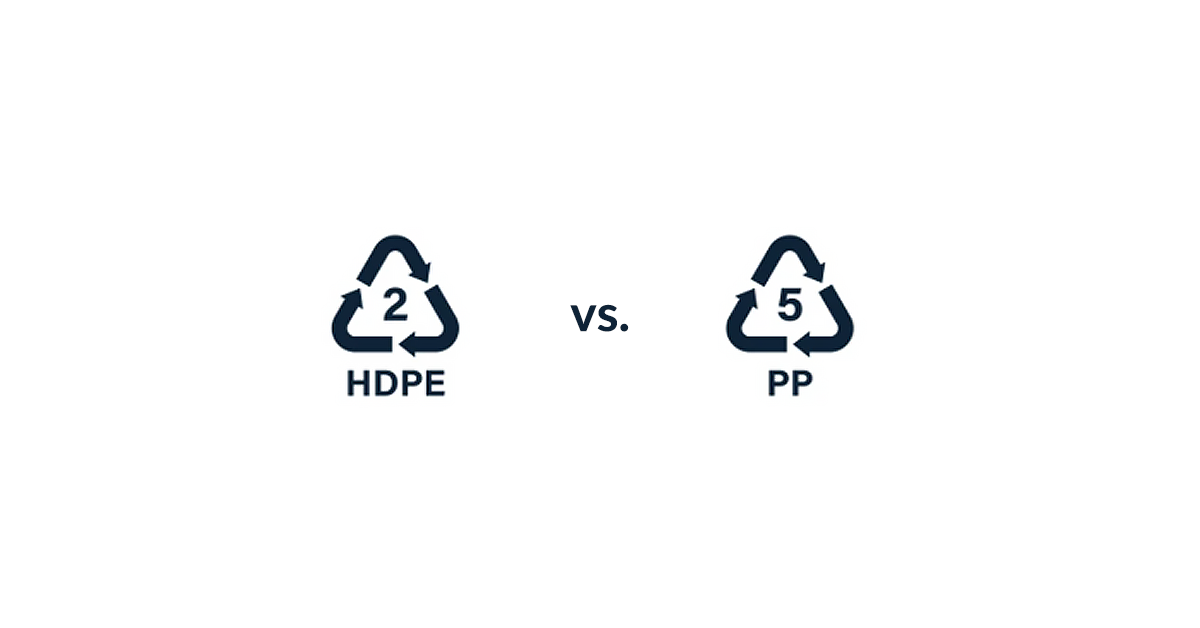
PP vs. HDPE: Choosing the Right Thermoplastic for Your Needs
When it comes to thermoforming projects, it’s important to select the right thermoplastic for your needs. Polypropylene (PP) and High-Density Polyethylene (HDPE) are both popular thermoplastic choices. While both of these thermoplastics are great choices, they have unique characteristics that make each suited for a different application.
In this article, we’ll be comparing these two popular thermoplastics side-by-side: uncover their properties, discover the advantages and disadvantages, and examine the ideal applications for each thermoplastic.
What is Polypropylene Thermoplastic?
Polypropylene (PP) is an advanced thermoplastic that can be heated to a liquid form, cooled down, and heated again without drastic changes occurring. As such, it has become a staple in manufacturing applications due to its high heat resistance and ability to liquefy rather than burn. After the plastic cools, CNC machining or die-cutting are then used to complete the part or project.
What are the Advantages of Polypropylene Thermoplastic?
The material in PP thermoplastic is fairly elastic while still being tough enough to hold up to wear and tear. With high chemical and electrical resistance, it’s especially great for electronic components. PP thermoplastic offers a wealth of other advantages, including:
- High production rates
- Cost-effective pricing
- Electrical and chemical resistance
- Resistance to moisture absorption
How is Polypropylene Used as a Thermoplastic?
Polypropylene thermoplastic is a staple in a range of industries and products, including:
- Packaging materials and textiles
- Interior vehicle parts
- Food packaging
- Medical supplies
Polypropylene is a popular choice for lightweight molded parts, as it’s a lower density thermoplastic that’s also lower cost compared to other thermoplastics. For that reason, it’s a popular choice for crafting lightweight, higher-volume parts.
What is High-Density Polyethylene Thermoplastic?
High-density polyethylene (HDPE) thermoplastic is known for its high strength and density, allowing greater stability. The process involves heating a thermoplastic polymer made from petroleum. After the finished thermoplastic is molded, it results in a UV- and chemical-resistant material ideal for outdoor use.
What are the Advantages of HDPE Thermoplastic?
Compared to PP, HDPE is much denser and stable. This means that it will retain its shape once formed under various conditions. Some of the advantages of HDPE as a thermoplastic include:
- High stability
- Low moisture absorption
- Resistant to chemicals, mold, mildew, etc.
- Malleable with heat
- Recyclable
How is HDPE Used as a Thermoplastic?
There are multiple uses for HDPE thermoplastic, but one of the main areas where it excels is in product manufacturing. Within this industry, the plastic can be used for various parts and projects, including:
- Corrosion-resistant piping
- Medical equipment
- Laundry soap bottles
- Recreational vehicles
- Fuel tanks
Because HDPE is a stable plastic, it’s an ideal choice for parts that will be exposed to the elements. This makes it a great choice for both industrial and recreational applications.
Polypropylene vs. High-Density Polyethylene
Polypropylene and High-Density Polyethylene are both commonly used to fabricate plastic parts. To decide which one is right for your project, you need to consider your part and what conditions it will be subjected to.
PP is a cost-effective, temperature-resistant and lightweight thermoplastic. It protects parts and projects that will be subjected to heat.
Meanwhile, HDPE is a strong, dense and stable plastic. With its high UV resistance and contaminant resistance, it’s great for parts that will be in direct contact with the outdoors or chemicals.
The best way to compare PP and HDPE is by looking at their core properties side by side:
Polypropylene |
High-Density Polyethylene |
|
|
Heat Resistance |
High |
Low |
|
UV Resistance |
Low |
High |
|
Mold, Mildew, & Corrosion Resistance |
Low |
High |
|
Density |
Low |
High |
|
Stabilization |
Low |
High |
|
Recyclability |
High |
High |
It’s worth noting that both PP and HDPE can be modified with additives to change their properties. For example - PP can be stabilized by adding polymer antioxidants. Likewise, HDPE can be made to be more heat resistant with the addition of a thermal stabilizer. It’s important to consider the broader picture of your part and the conditions it will be exposed to when deciding the right thermoplastic to use. That’s where you need an experienced partner.
Where to Find Thermoplastic Molding Services
Choosing between Polypropylene (PP) and High-Density Polyethylene (HDPE) depends on the unique demands of your part. It’s crucial to partner with a team that understands how to align performance with your specific application.
At Industrial Custom Products, we specialize in helping our clients identify the right thermoplastic for their needs and bring their designs to life with thermoforming and expert fabrication. Our material selection process ensures your parts are engineered for strength, longevity and cost-efficiency.
Ready to get started? Connect with ICP to explore our thermoforming capabilities and take the first step toward building superior parts that perform under pressure.
Explore ICP Material Selection for Superior Parts
Explore Our Thermoforming Capabilities
Industrial Custom Products is a one-stop-shop for custom manufacturing and plastic fabrication, including: prototyping and product development, die cutting and dieless knife cutting, thermoforming and vacuum forming, large part thermoforming, CNC plastic routing, fabrication and assembly and drape forming.
